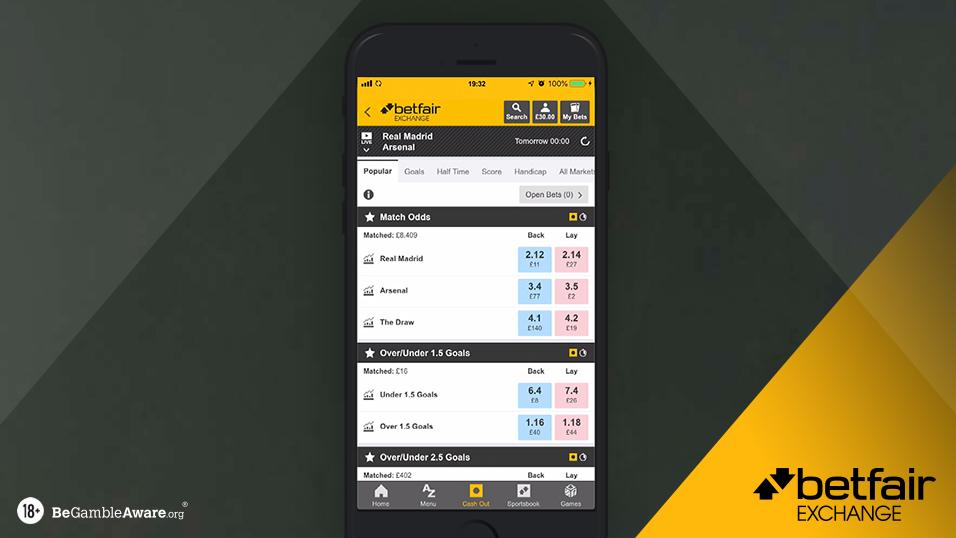Betting Odds Explained 4 6
The formula for the probability against this team is now, 6/(6+4) p/q odds against - P(loss) = p/(p+q) So the team is expected to lose with a probability of 6/10 i.e., 3/5. The betting money you win will be higher if you back this team and it wins, that is the design of the game:). So, £1 on a 10/1 bet will give you £10 winnings. For £1 on 6/4 you just need to divide 6 by 4, giving you a multiplier of 1.5. Therefore if you stake £1 on a 6/4 bet you will return winnings of £1.50. When you bet and win you also get your stake back on top of your winnings. Betting odds represent the probability of an event to happen and therefore enable you to work out how much money you will win if your bet wins. As an example, with odds of 4/1, for every £1 you bet, you will win £4. There is a 20% chance of this happening, calculated by 1 / (4. Typically, a point spread has odds of -110 for either side of the bet. In the example above between the Cowboys and Giants, the point spread is 4.5 points, while the odds are -110, meaning you would have to wager $110 to earn a profit of $100, or a profit of $0.91 for every dollar you bet.

“Wait, why does this NFL team have a -235 next to its name? What’s with New England Patriots (-15) vs. Miami Dolphins (+15)? Help! HEEEELPPPP!”
If that sounds like you, we’re here to assist you. If you’ve stared at a board at a sportsbook or just seen spreads and moneylines on the Internet and been utterly confused, don’t worry. It’s not just you. Those numbers can be confounding.
But hopefully, once you’re done reading this, you’ll completely understand how they work. As you prepare to dive into the world of sports betting, here’s a breakdown of how the lines work, starting with …
Spreads
It would be really easy to bet on a game if you could put money on a heavy favorite to win.
That’s where point spreads come in. Let’s look at an example:
Ufc Betting Odds Explained
Philadelphia Eagles (-4.5)
New York Giants (+4.5)
In this case, you can bet on either two outcomes: you can put money on the Eagles to win the game by 4.5 points OR MORE, which makes them the favorites. Or you can bet that the Giants will either win or lose by LESS THAN 4.5 points. They’re the underdogs.
Now, sometimes the spread “moves” during the days leading up to the game. Perhaps the Eagles’ spread ends up being -3.5 (in which they must win by 3.5 points or more to give you a victory in your bet). Your bet all depends on whichever spread you bet on, whether it was when the Eagles were favored by 4.5 or 3.5 points.
If you ever see “PK” or “pick” next to a team, it means there’s no spread and you can bet on who will win, no matter what the score is.
Moneylines
Horse Racing Betting Odds Explained
Let’s take that same example above but use moneylines:

Philadelphia Eagles (-200)
New York Giants (+150)

The team with a minus symbol is the favorite, and the number is how much money you would need to bet to win $100. In this case, you would have to bet $200 on the Eagles in order to win an additional $100.
The Giants are the underdogs. If they’re +150, that means you could bet $100 to win $150.
Note that you can bet any amount you want, but those numbers are always calculated and posted the same way, either in how much money you would need to wager to win $100 or how much money you could win by wagering $100.
Odds
If you’re betting on something like the team who will win the Super Bowl in the future, you might see it look like this:
New England Patriots — 3/1
Baltimore Ravens — 5/1
Kansas City Chiefs — 8/1
If you were betting on the Patriots and their 3/1 odds, you would win $3 for every $1 you spend. So if you bet $50 on the Pats and they ended up winning the Super Bowl, you’d win $150 (plus your original wager) back.

Good luck!
By convention only a set of fractions are used in fractional odds betting markets. The set does not include exact mathematical equivalents to all possible decimal and American odds. We use the closet fraction that is used in betting markets.
For example, the exact mathematical equivalent of decimal odds 30 is fractional odds 29/1. However 29/1 is not used in betting markets, instead 30/1 is used, so that is what appears in this converter.
For an explanation of the odds types on this table see decimal, fractional and American odds. To find out what the numbers really represent see understand odds as probability with overround.